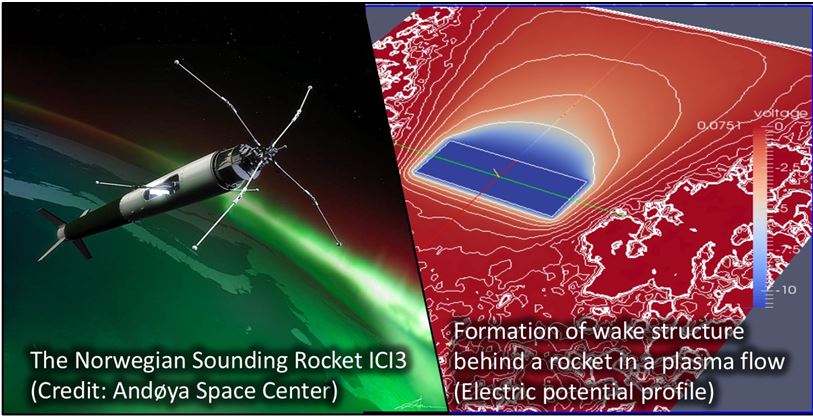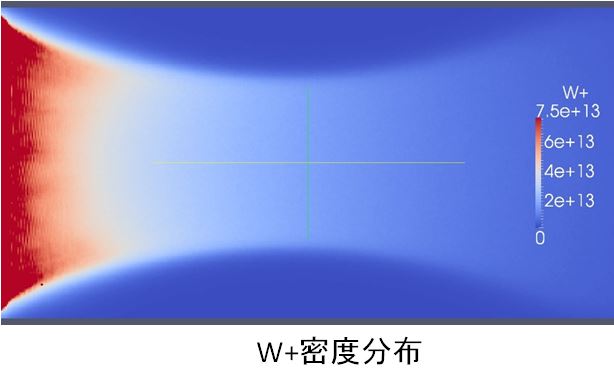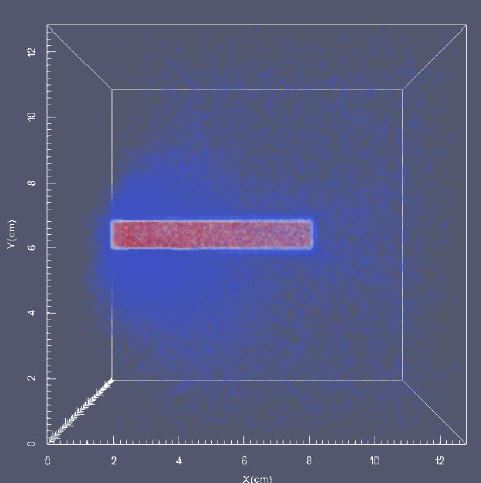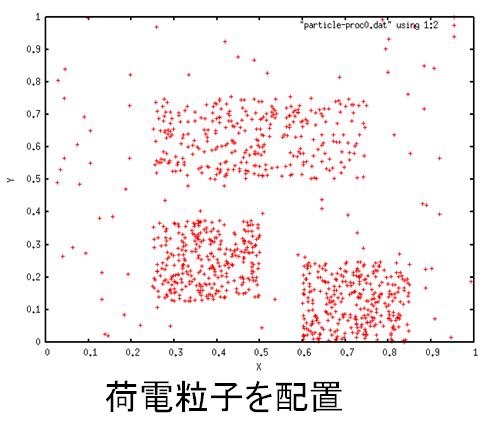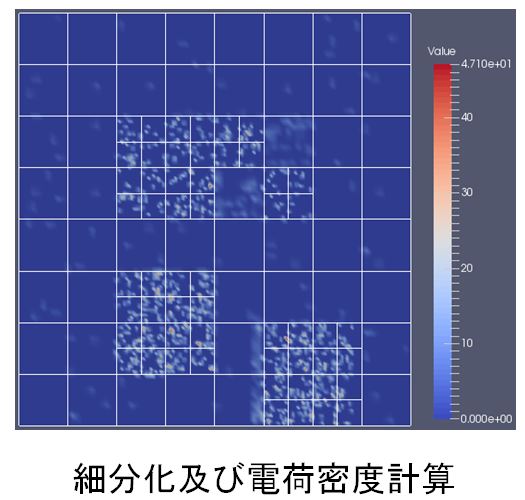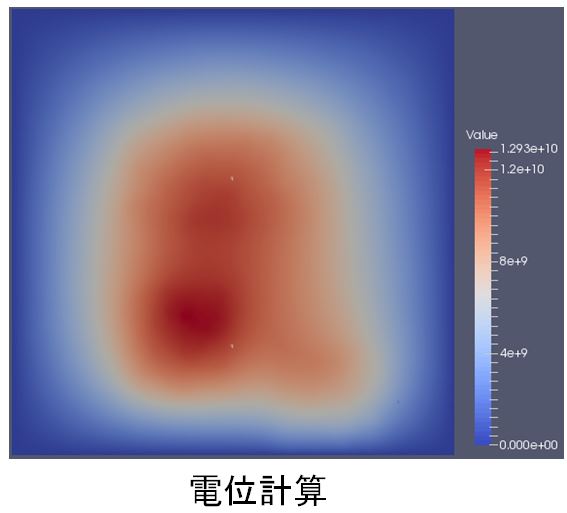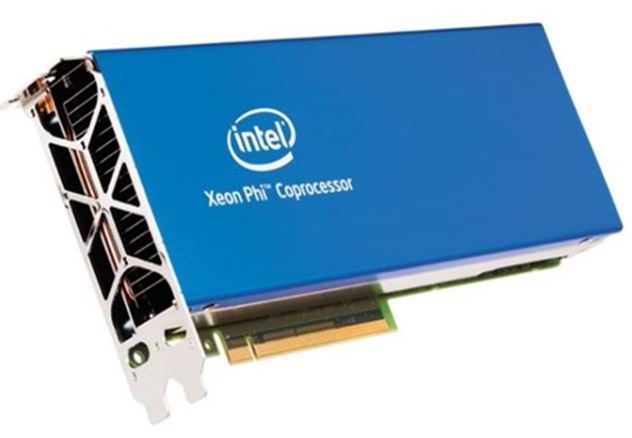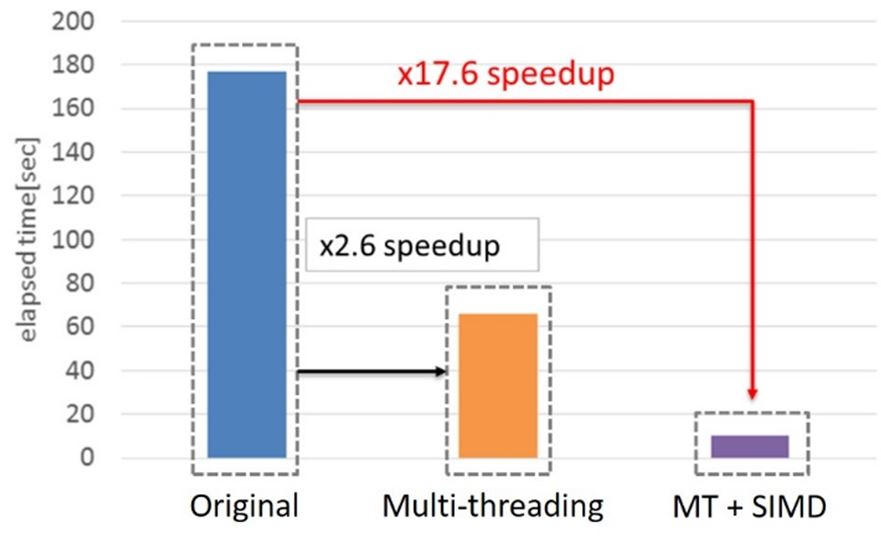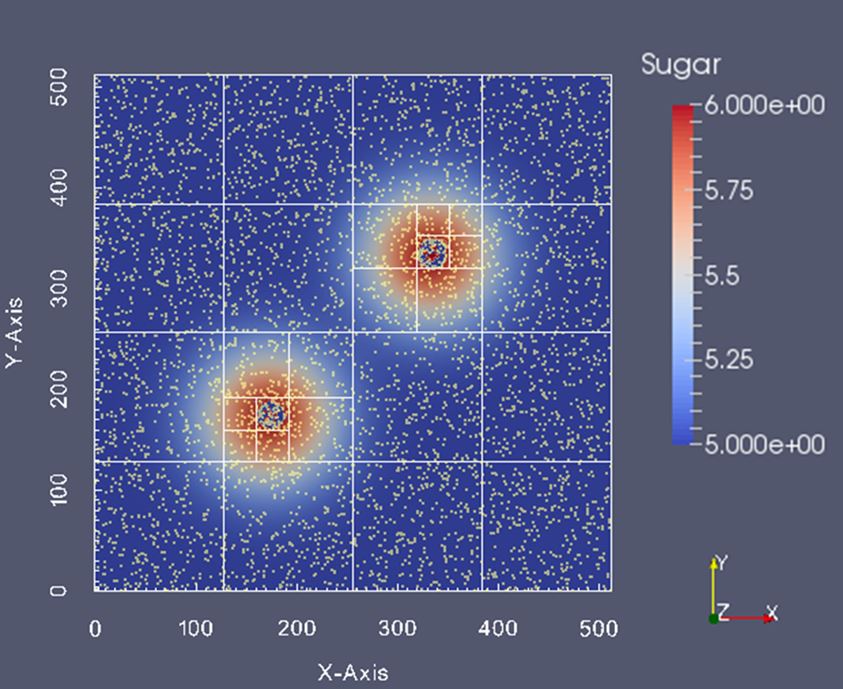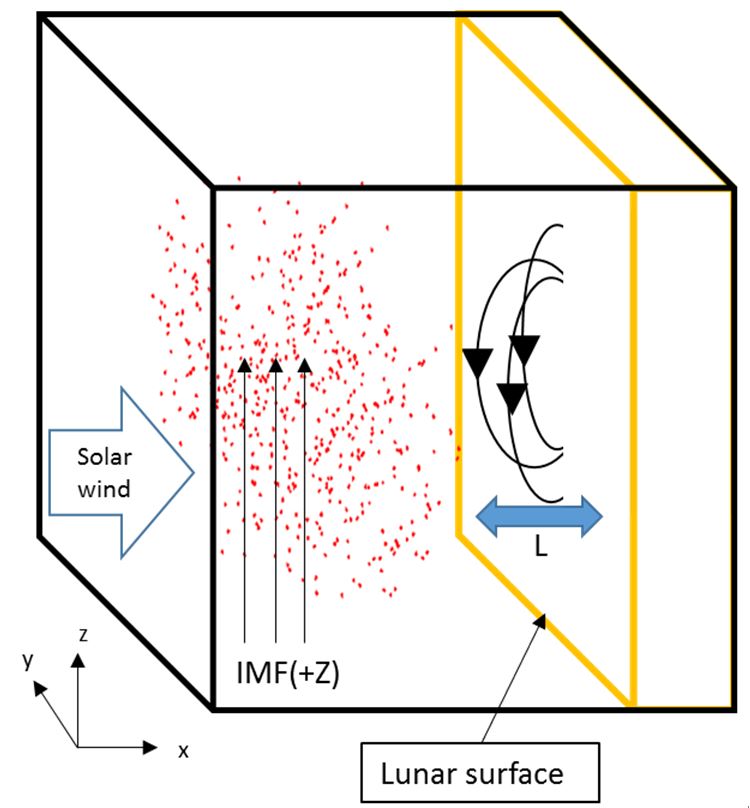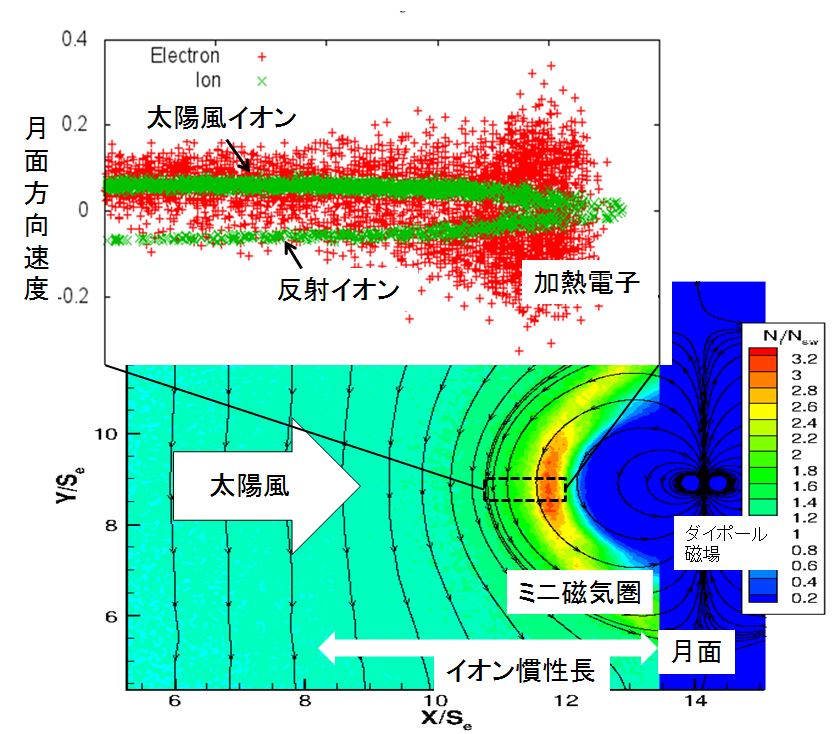Research Topics
The followings are some research topics which we have been currently working on.
- International Research Collaboration on Numerical Simulations of Rocket-Plasma Interactions開く
-
Despite that aurora has been fascinating a lot of people, the underlying physical processes of the phenomenon have not been fully understood. For better understanding of the processes, in-situ observations using sounding rockets are one of power tools, and the ICI-series of rocket campaigns have been continuously carried out in Norway. Whereas the sounding rocket experiments are a promising method to investigate space environment, one difficulty is that in-situ measurements using its onboard instruments would be interfered with various rocket-plasma interactions and the resulting plasma perturbations. Such interactions are difficult to resolve in an analytical manner due to complex effects of e.g., relative plasma flow with respect to the rocket, geomagnetic field, and collisions between plasma and neutral particles. We, therefore, need some numerical approaches to address the issue. In this context, we, the Computational Space Science and Engineering laboratory and the 4DSpace center in Oslo University, started a research and educational collaboration on numerical studies on rocket-plasma interactions. We expect that intensive numerical investigations will provide practical knowledge required to interpret in-situ observation data appropriately, and also contribute to comprehensive understanding of the auroral physics.
- Particle Simulations on Plasma and Dust Environment around Lunar Vertical Holes開く
-
The Moon has neither dense atmosphere nor intrinsic magnetic field, and its surface directly interacts with solar wind plasma and near-surface photoelectrons. One of important consequences of such interactions is the charging of its surface. Because a lunar surface provides boundaries for plasma particles, the potential structure strongly depends on surface topography of the Moon. As one example of interesting landscapes, we have numerically modeled the electrostatic environment around “lunar vertical holes”, recently discovered by the Kaguya satellite and the Lunar Reconnaissance Orbiter. The hole structure has recently received particular attention, because the holes have high potential as locations for constructing future lunar bases in terms of fewer extra-lunar rays/particles and micrometeorites reaching the hole bottoms. In this sense, these holes are not only interesting in selenology, but are also significant from the viewpoint of electrostatic environments. Our research interest also includes the dynamics of dust grains near the lunar surface. Due to the plasma environment near the lunar surface, some portion of micron and sub-micron sized grains on the lunar regolith layer are also charging and levitated above the lunar surface, which are known as the Moon dust. It is of practical importance to assess such a distinctive environment, reminding that the dust grains will affect the Moon rover system in future landing mission. We apply our original particle-in-cell simulation code to investigations of surface charging and plasma dynamics near the hole. We also discuss the effects of the environment on the dynamics of the charged dust grains.

月縦孔のイメージ図 (Copyright: JAXA/ISAS)
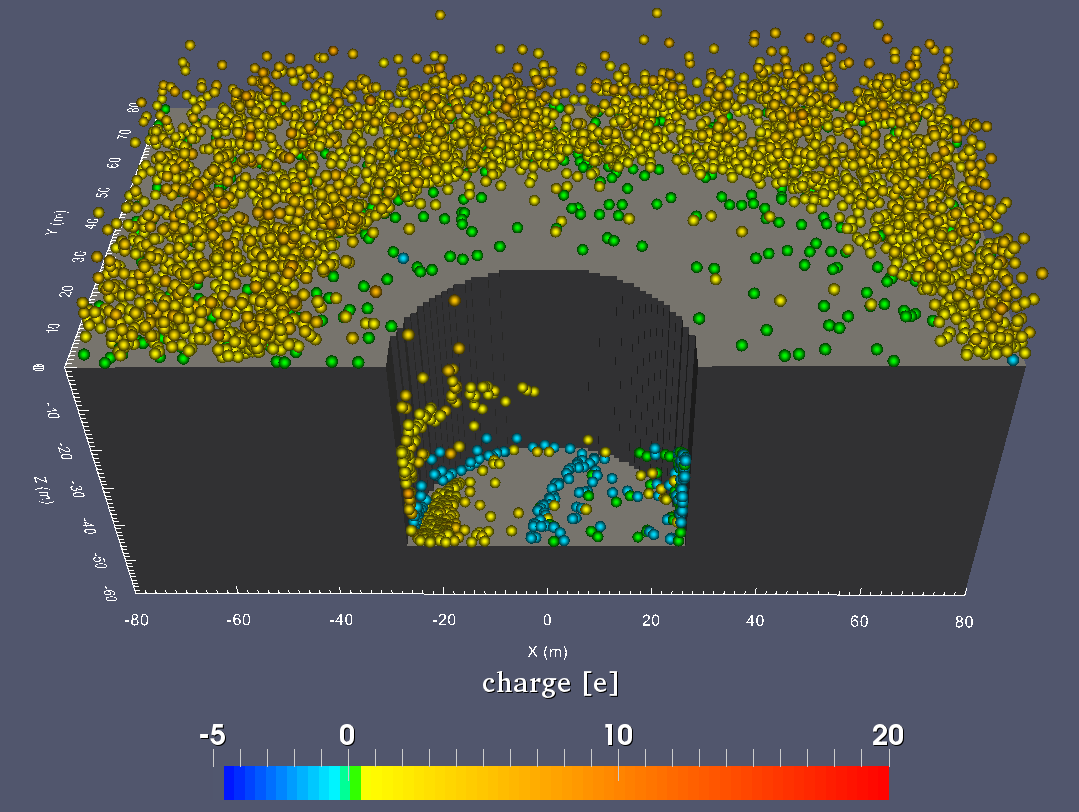
月縦孔周辺での帯電ダスト挙動に関するシミュレーション結果
- Plasma simulation on the ion generation in the Air breathing Ion Engine (ABIE)開く
-
The Air Breathing Ion Engine (ABIE) is one of the promising candidates for propulsion system used in sub-low Earth orbit (S-LEO). We have been studying the ion generation inside the engine by performing EMSES simulation code in which particle collision is implemented with the Monte-Carlo method. In the ion generation region, we have a dipole magnetic field and electric field antenna which radiates microwave so that electron cyclotron resonance (ERC) accelerates electrons and contributes to efficient ionization by collision with neutral particles. We have been searching for optimal configuration of dipole field and electric field antenna as well as the internal shape of the ion generation region by performing EMSES simulations. The obtained results can be helpful to the optimal design of ABIE of maximum ion generation.
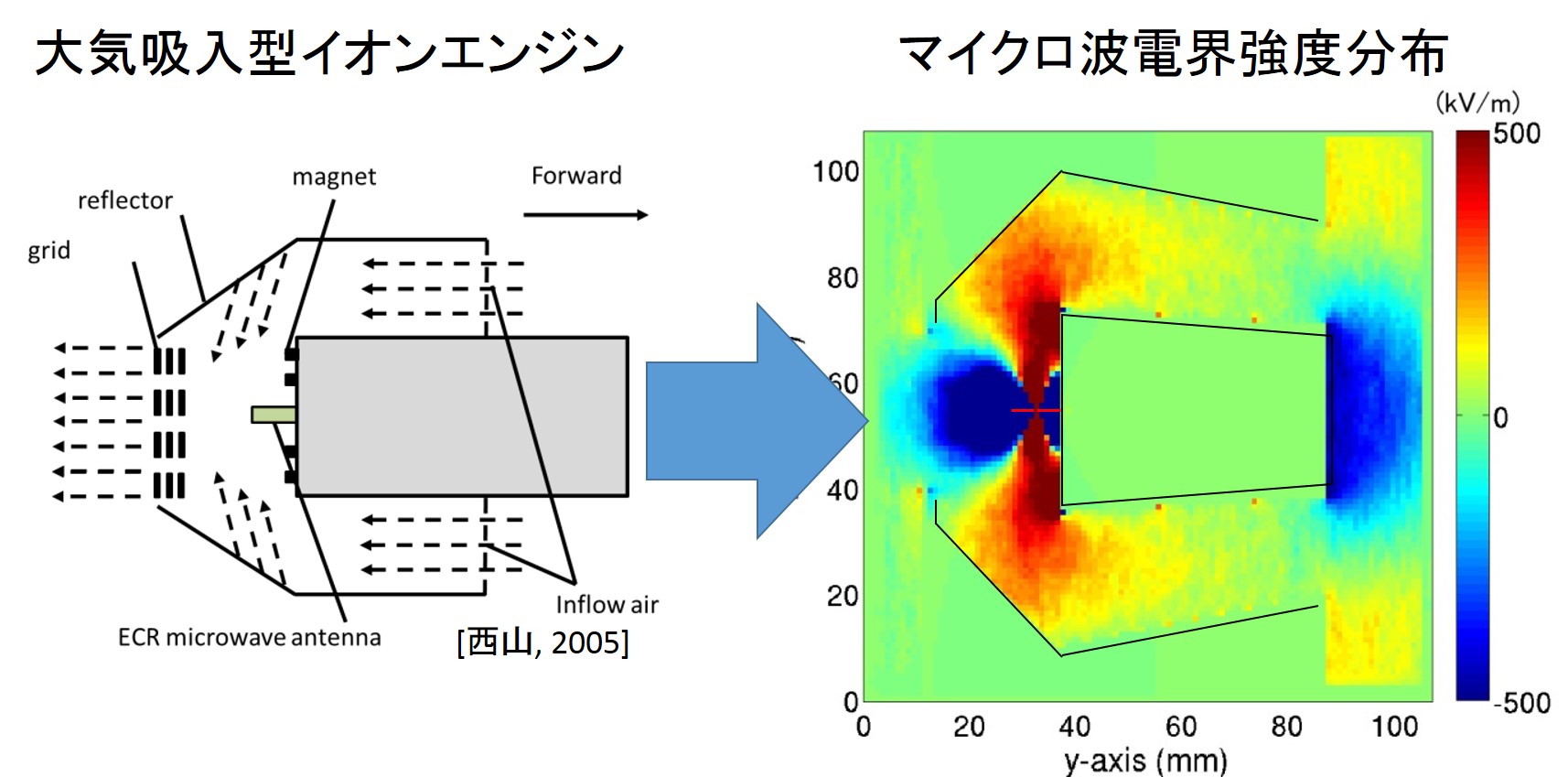
- Particle-In-Cell/Monte-Carlo (PIC/MC) Simulations of Axial Magnetic Field Effects on Ion Beam Dynamics開く
-
The Arc Ion Plating (AIC) method is one of promising film formation techniques, in which coating material is ionized and vaporized with the aid of vacuum arc discharge. Recent research and development have revealed that magnetic field applied inside the device will improve the stability of vacuum arc discharge and the capability of controlling the ionized ion dynamics. However, its detailed electrodynamic processes have been poorly understood, because heavy ions with large gyro radii should be nearly unmagnetized in a device scale, in contrast with lighter electrons being fully magnetized. In this study, we applied the PIC/MC simulation method to this issue for better understanding and optimized control of ion beam behavior in the device. We particularly focus on effects of electrostatic field generated inside the device on ion beam dynamics, and study its dependence on neutral gas pressure and magnetic field configuration. This is collaborative research project with the Kobe Steel Ltd.
Simulation result on the density profile of heavy ion beam
- Plasma simulations on ion beam neutralization by electron emission from spacecraft開く
-
By performing full Particle-In-Cell simulations, we examined the transient response of electrons released for the charge neutralization of a local ion beam emitted from an ion engine which is one of the electric propulsion systems. A heavy ion beam emitted from a spacecraft propagates away from the engine and forms a positive potential region with respect to the background. Meanwhile electrons emitted for a neutralizer located near the ion engine are electrically attracted or accelerated to the core of the ion beam. Some electrons with the energy lower than the ion beam potential are trapped in the beam region and move along with the ion beam propagation. We examine the beam region in terms of electric potential to see how much the ion beam is neutralized by the electrons emitted from the neutralizer. To examine the detail of the beam region, we also perform PARMER simulation in which adaptive mesh refinement is incorporated. The simulation results will be helpful to develop efficient neutralizer in the future.
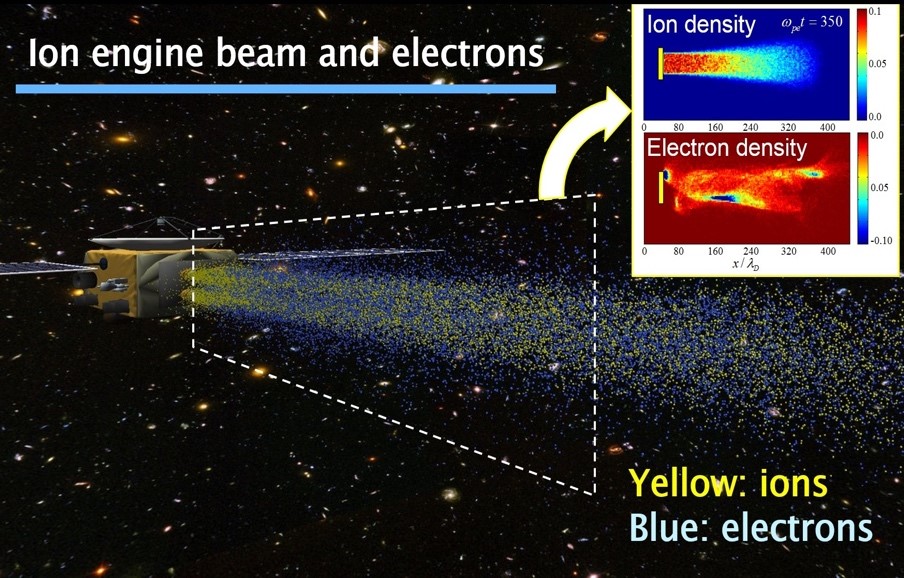
ion beam in red and electrons from the neutraliser in blue
Fine grid structure in the ion beam region
- Development of a Poisson solver using the multigrid method for block-type adaptive mesh refinement (AMR) system開く
-
To apply our framework of block-type adaptive mesh refinement (AMR) to plasma particle simulation, we need a Poisson solver applicable to non-uniform grid system. By using the multigrid method, we developed a new Poisson solver for block-type adaptive mesh refinement (AMR) system, which is called AMR-Multigrid. As a test, we distributed a bunch of charged particles in a simulation domain created by the block-type AMR framework and calculated the electric potential at each grid point with the AMR-Multigrid solver. It is confirmed that the potential values are correctly obtained.
Charged particle distribution
Grid refinement and deposition of charges to grids
Contour map of electric potential by AMR-Multigrid
- Development of a high-performance plasma particle simulation method in Exa-scale era開く
-
We are developing a high-performance plasma particle simulation method in Exa-scale era, which could be brought by manycore processors of ordinary (i.e., non-GPU type) CPU cores. Though such a processor like Intel Xeon Phi gives us TFlops-class computational power and may lead us to Exa-scale computing, full exploitation of its potential is far from an easy job due to its source of high performance, namely a large scale multithreading and a wide SIMD mechanism. Our case study with a particle-in-cell plasma simulation code reveals that a simple porting of an existing code to Xeon Phi is infeasible from the viewpoint of performance and we have to make a significant change of the code structure so that it conforms with the features of the processor. More specifically, we need comprehensive and significant efforts of optimizations for all of the following three-tier parallelisms, i.e., inter-node parallelism usually programmed by MPI, intra-node parallelism corresponding to shared memory multithreading, and intra-core parallelism to exploit SIMD mechanism. Our study confirmed that the recoding efforts are well rewarded achieving a good single-node performance on the Xeon Phi coprocessor, which is at least higher than that obtained from an execution on the Xeon host processor.
- Sugarscape model simulation using block-type adaptive mesh refinement開く
-
We have developed a new framework with which general simulation codes of FDTD using unifrom grids can be converted the ones of Adaptive mesh refinment (AMR). By using the framework, simulation regions where high resolution is needed can be adaptively refined, which can contribute to efficient use of computational resources. This framework is incorporated with the treatment of particles which can freely move in the simulation domain. The purpose of this study is whether this framework can be applied to social simulations. We particularly applied the framework to the Sugarscape model simulation. The conventional Sugarscape model is the purely cellular automaton. In order to fit the model to our framework, we introduce a new treatment for the Sugarscape simulations, in which the agents in Sugarscape model are handled as a bunch of particles. In addition, in analogy with the plasma particle simulation, we introduced a new concept of interactions between particles and field information, and we developed the particle-based Sugarscape (PSS) model. We reproduced the Sugarscape model simulation by applying the model to this framework. We also measured the computation time and memory usage in the PSS simulation in order to evaluate the performance of the framework and PSS simulation of using the framework . We identified a number of hot spots in the framework and proposed some solutions for increasing the efficiency of the framework.
Color contour map for sugar distribution. Agents are ploted in yellow dots. Boundaries of each block region is shown in white. The region is refined where the sugar density as well as the agent density is high.
- Three-dimensional simulation on the solar wind electron dynamics above a lunar crustal magnetic anomaly開く
-
We studied the electron dynamics in the boundary current of a mini-magnetosphere created above a magnetic anomaly on the lunar surface by performing three-dimensional electromagnetic particle-in-cell simulations. The size of a magnetic anomaly can be characterized by the distance L from the center of the magnetic dipole to the position where the pressure of the local magnetic field becomes equal to the dynamic pressure of the solar wind under the magnetohydrodynamics (MHD) approximation. In this study, we treated a magnetic anomaly which has L smaller than the local ion Larmor radius observed at the distance of L from the dipole center. In the simulation results, we confirmed that a mini-magnetosphere is formed by the interaction of the magnetic anomaly with the solar wind plasma. As examined in the previous studies, an asymmetric density profile of the mini-magnetosphere is shown between the dawnside and duskside regions. It is also shown that the boundary current of the magnetosphere is dominated by the electron flux. Considering that intense outward electric field is induced in the boundary region by the charge separation between the magnetized electrons and the weakly magnetized ions, the solar wind electrons entering the boundary region are accelerated by the electric field and start making the ExB drift motion in the perpendicular direction to the magnetic dipole. In the present case where the direction of the magnetic field is southward in the dayside region, the direction of the electron drift velocity is the duskward direction in the low-latitude region. In the high-latitude region, on the other hand, the electrons seem to turn around and the electron flux is reversed to the dawnward direction. This turn-around structure of the electron flow between the low-latitude and the high-latitude regions causes a loop-like current structure in each hemisphere, which is very characteristic in the mini-magnetosphere created above a magnetic anomaly. To figure out the electron flux enhanced in the equatorial boundary current we examined the detail of the electron dynamics in terms of electron cyclotron motion. We found that the maximum electron velocity observed at the most inner edge in the magnetosphere is due to the electron gyromotion itself, not the drift motion of the guiding center of the electron gyration. We also confirmed that the width of the boundary layer is approximately equal to the diameter of the local electron gyromotion.
3D simulation model for the interaction between the solar wind and a magnetic anomaly
Formation of a mini-magnetosphere and ion reflection in the dayside regionh
<
